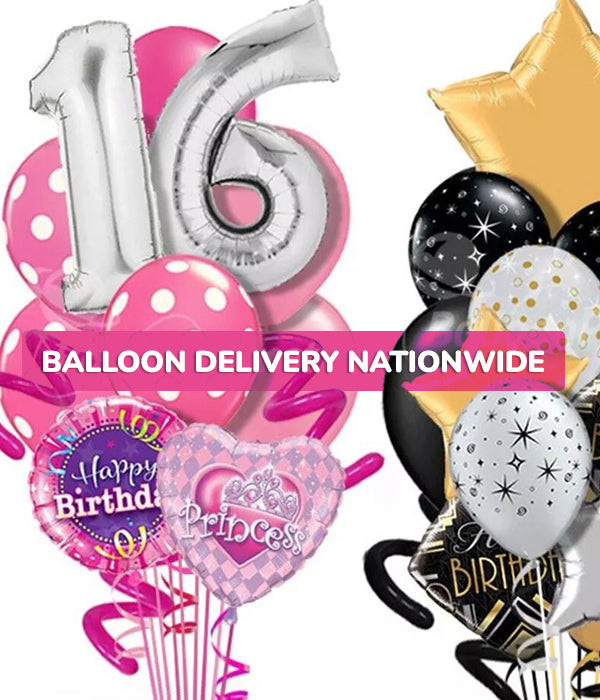Your cart is currently empty.
Balloon Care & Safety Guide
Balloons and Temperature
Don’t leave balloons in a hot car - helium expands in the heat and this could cause your balloons to burst! We recommend that you use air conditioning in your vehicle when transporting balloons on a hot day.
If balloons get rained on and start to droop, don't worry – they will float again when dry.
When helium-filled balloons are taken into the cold, they will temporarily deflate and will re-inflate again when warm.
Balloons - Child and Pet Precautions
Balloons are not a toy. Uninflated or burst balloons can present a choking hazard and should never be left with children under the age of eight without supervision.
Store balloons away from pets to ensure that they cannot get themselves tangled with balloon ribbons or accidentally ingest popped balloons or their decorative contents such as confetti, feathers, or other materials.
If a balloon pops, clear away any broken balloons and it's decorative contents (if applicable) immediately.
Balloons and Allergies
Most balloons are made of natural rubber latex and may cause allergies. Please look out for symptoms in case of allergies and seek immediate help.
Inhalation of Helium
Inhaling helium can be dangerous and it is not recommended. It can deprive your body of oxygen and can result in a fatality.
Balloons, Ceilings and Fixtures
Lights, paint textures, irregular surfaces and even static can all pop balloons. If you are planning on placing your balloons on a ceiling, ensure that you test it first. Avoid sharp or rough materials and edges.
Latex balloons and Oxidisation
Clear balloons become cloudy quickly when exposed to heat and sunshine. Coloured balloons will take on a velvety, matte appearance.
Balloons can Pop
While we use the highest quality balloons and take every precaution necessary with your balloons to ensure they last through your event, once the balloons leave our door, they are out of our control.




